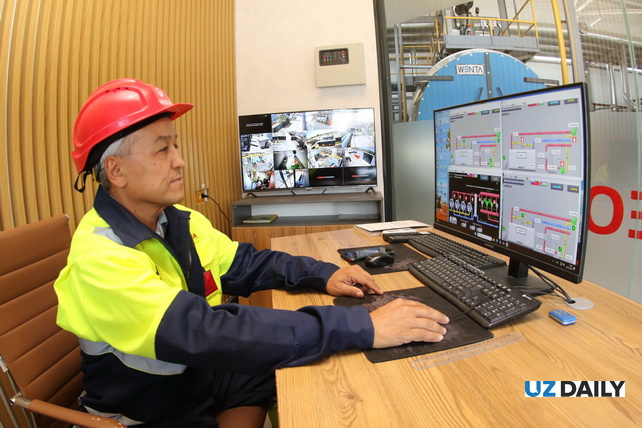
Veolia Energy Tashkent Explains Cause of Discolored Hot Water in the Capital
Veolia Energy Tashkent Explains Cause of Discolored Hot Water in the Capital
Tashkent, Uzbekistan (UzDaily.com) — Veolia Energy Tashkent has addressed residents’ complaints about changes in the color of hot water in Tashkent.
According to the company’s press service, a brownish or rusty tint may appear at the start of the heating season, when the district heating networks are switched to the preparation mode and water begins to circulate through the pipelines.
“This process is necessary to check the system and ensure even heating of the network before the heating supply begins,” the company explained.
During the non-heating period (spring–summer–autumn), the city’s thermal networks operate in “summer mode.” At this time, hot water is supplied through one of the two main lines, while the other line undergoes scheduled maintenance and preventive work. Once repairs are completed, the system is refilled with network water, which can temporarily change its color.
“During downtime, especially at high temperatures, water naturally interacts with the inner walls of metal pipes. A thin layer of rust forms, which partially washes off when the system is restarted, giving the water a brownish hue. This is temporary and disappears within a few days,” Veolia Energy Tashkent explained.
The company also noted that some buildings were found to have incorrect connections, with hot water supplied through a return pipe not used in circulation during the summer. This can lead to lower temperatures, stagnation, and discoloration of the water.
Currently, company specialists, together with management organizations, are adjusting the heating node schemes and flushing the water until it becomes clear.
Residents experiencing such issues are advised to contact the company’s call center (1347, 71 200 00 56) or their local district offices during weekends. If it is confirmed that external networks affect water quality, a recalculation of charges will be considered.
Veolia Energy Tashkent emphasized that the problem will disappear once the capital transitions to a closed heating system. As part of the project, old metal pipes are being replaced with modern ones, and individual heat points (IHPs) are being installed in residential buildings.
“In a closed system, hot water is heated inside the building rather than coming directly from the network. This prevents network water from reaching taps, ensures constant circulation, and eliminates the risk of rust formation,” the company added.